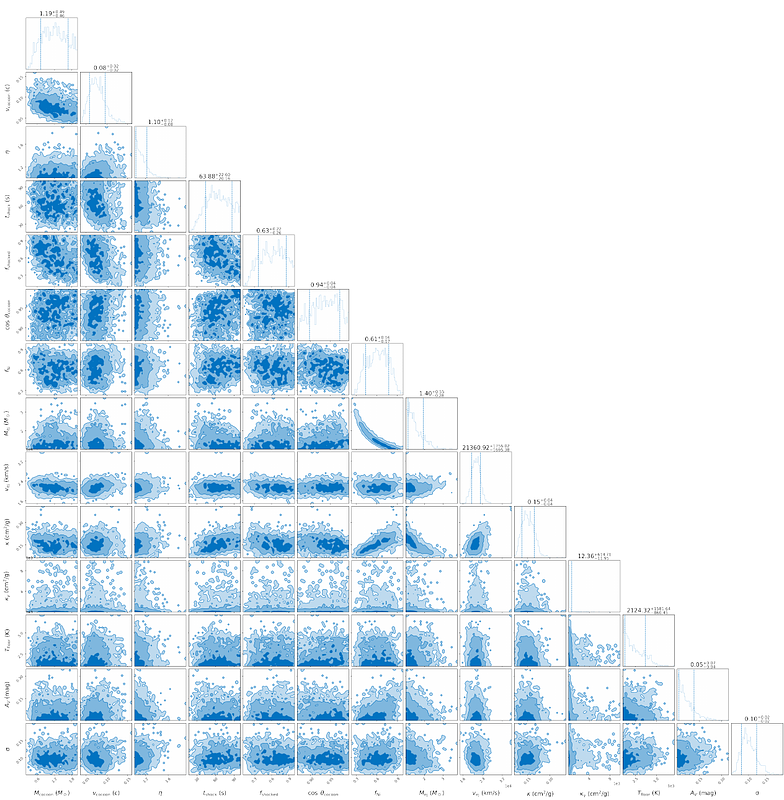EP250108a/SN 2025kg: A Broad-Line Type Ic Supernova Associated with a Fast X-ray Transient Showing Evidence of Extended CSM Interaction

EP250108a/SN 2025kg: A Broad-Line Type Ic Supernova Associated with a Fast X-ray Transient Showing Evidence of Extended CSM Interaction
Gokul P. Srinivasaragavan, Hamid Hamidani, Genevieve Schroeder, Nikhil Sarin, Anna Y. Q. Ho, Anthony L. Piro, S. Bradley Cenko, Shreya Anand, Jesper Sollerman, Daniel A. Perley, Keiichi Maeda, Brendan O'Connor, Hanindyo Kuncarayakti, M. Coleman Miller, Tomás Ahumada, Jada Vail, Paul Duffell, Ranadeep Ghosh Dastidar, Igor Andreoni, Aleksandra Bochenek, Seán J. Brennan, Jonathan Carney, Ping Chen, James Freeburn, Avishay Gal-Yam, Wynn Jacobson-Galán, Mansi M. Kasliwal, Jiaxuan Li, Maggie L. Li, Niharika Sravan, Daniel E. Warshofsky
AbstractWe present optical, radio, and X-ray observations of EP250108a/SN 2025kg, a broad-line Type Ic supernova (SN Ic-BL) accompanying an Einstein Probe (EP) fast X-ray transient (FXT) at $z=0.176$. EP250108a/SN 2025kg possesses a double-peaked optical light curve and its spectrum transitions from a blue underlying continuum to a typical SN Ic-BL spectrum over time. We fit a radioactive decay model to the second peak of the optical light curve and find SN parameters that are consistent with the SNe Ic-BL population, while its X-ray and radio properties are consistent with those of low-luminosity GRB (LLGRB) 060218/SN 2006aj. We explore three scenarios to understand the system's multi-wavelength emission -- (a) SN ejecta interacting with an extended circumstellar medium (CSM), (b) the shocked cocoon of a collapsar-driven jet choked in its stellar envelope, and (c) the shocked cocoon of a collapsar-driven jet choked in an extended CSM. All three models can explain the optical light curve and are also consistent with the radio and X-ray observations. We favor models (a) and (c) because they self-consistently explain both the X-ray prompt emission and first optical peak, but we do not rule out model (b). From the properties of the first peak in models (a) and (c), we find evidence that EP250108a/SN 2025kg interacts with an extended CSM, and infer an envelope mass $M_{\rm e} \sim 0.1\,\rm M_\odot$ and radius $R_{\rm e} \sim 4 \times 10^{13}$ cm. EP250108a/SN 2025kg's multi-wavelength properties make it a close analog to LLGRB 060218/SN 2006aj, and highlight the power of early follow-up observations in mapping the environments of massive stars prior to core collapse.